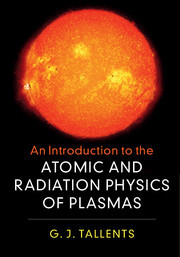Description
An Introduction to the Atomic and Radiation Physics of Plasmas
Author: Tallents G. J.
The physics of emission, absorption and interaction of light in astrophysics and in laboratory plasmas is developed from first principles.
Language: English
Subject for An Introduction to the Atomic and Radiation Physics of...:
Approximative price 78.93 €
In Print (Delivery period: 14 days).
Add to cart
Publication date: 02-2018
312 p. · 17.9x25.3 cm · Hardback
312 p. · 17.9x25.3 cm · Hardback
Description
/li>Contents
/li>Biography
/li>
Plasmas comprise more than 99% of the observable universe. They are important in many technologies and are key potential sources for fusion power. Atomic and radiation physics is critical for the diagnosis, observation and simulation of astrophysical and laboratory plasmas, and plasma physicists working in a range of areas from astrophysics, magnetic fusion, and inertial fusion utilise atomic and radiation physics to interpret measurements. This text develops the physics of emission, absorption and interaction of light in astrophysics and in laboratory plasmas from first principles using the physics of various fields of study including quantum mechanics, electricity and magnetism, and statistical physics. Linking undergraduate level atomic and radiation physics with the advanced material required for postgraduate study and research, this text adopts a highly pedagogical approach and includes numerous exercises within each chapter for students to reinforce their understanding of the key concepts.
Preface; 1. Plasma and atomic physics; 2. The propagation of light; 3. Scattering; 4. Radiation emission in plasmas; 5. Radiation emission involving free electrons; 6. Opacity; 7. Discrete bound quantum states: hydrogen and hydrogen-like ions; 8. Discrete bound states: many-electron atoms and ions; 9. Discrete bound states: molecules; 10. Radiative transitions between discrete quantum states; 11. Collisions; 12. Collisional-radiative models; 13. High density plasmas; Appendix. Vectors, Maxwell's equations, the harmonic oscillator and a sum rule; References; Index.
G. J. Tallents is Professor in Physics at the York Plasma Institute at the University of York. His current research centres on the effects of high plasma density on spectroscopy and the interaction of extreme ultra-violet lasers with solid targets.
© 2024 LAVOISIER S.A.S.



